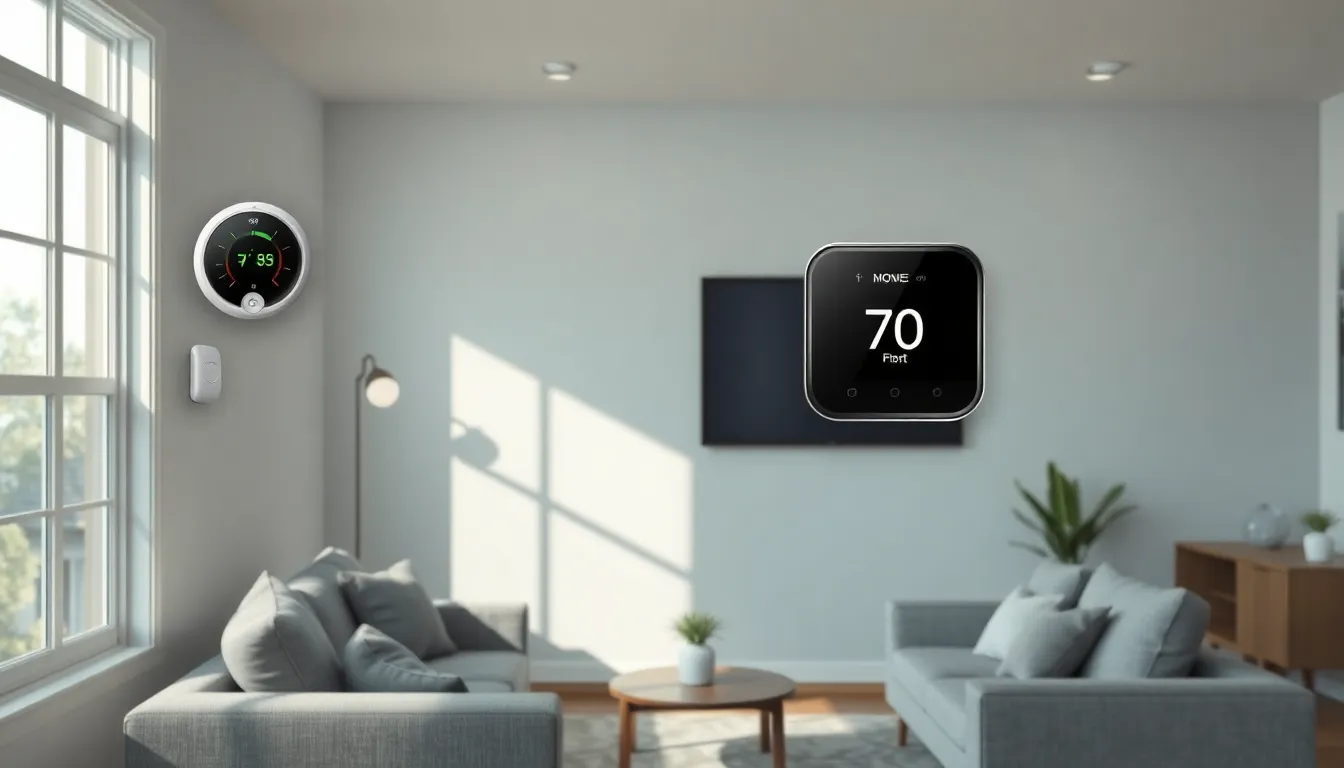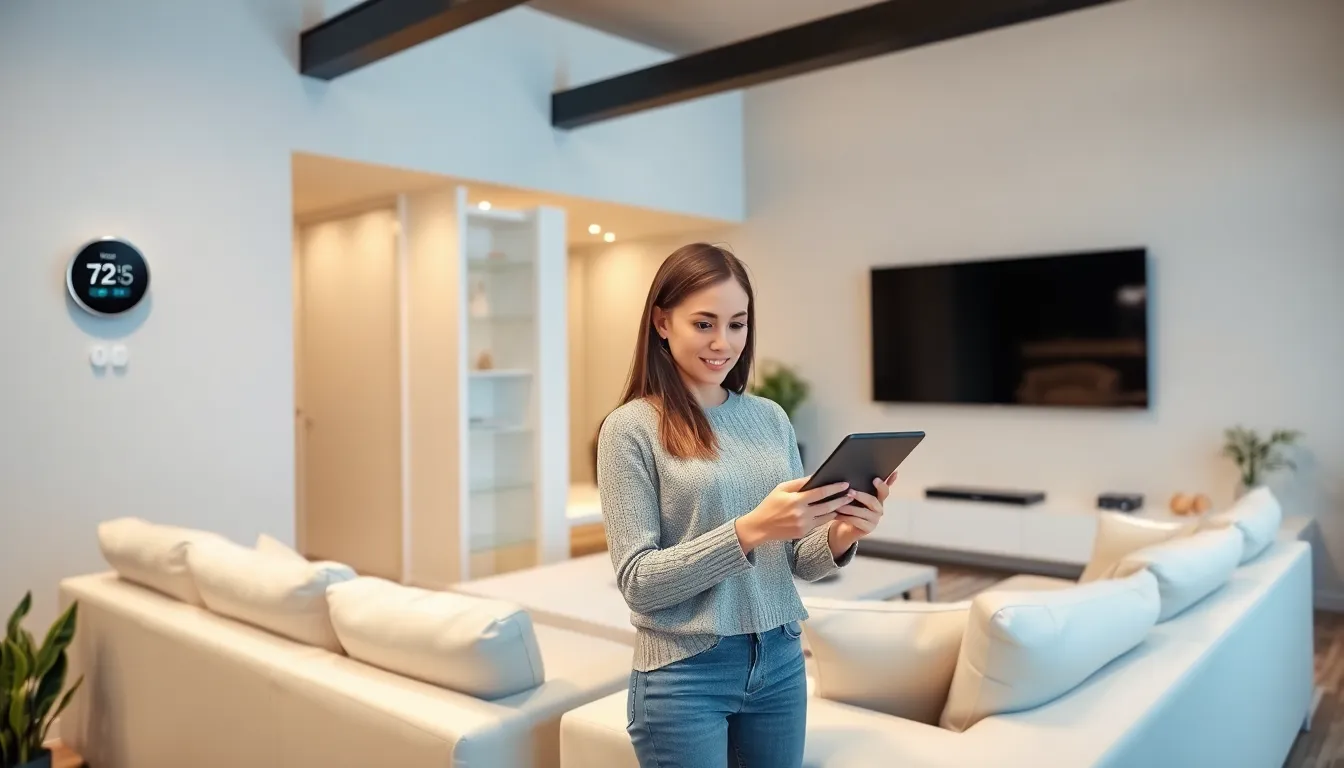Table of Contents
ToggleImagine walking into your home and having it greet you like an old friend. Lights flick on, the thermostat adjusts to your perfect temperature, and your favorite playlist starts serenading you—all without lifting a finger. Welcome to the world of smart home automation, where convenience meets a sprinkle of magic.
In a world that never stops moving, why should your home be stuck in the past? Automating your smart home not only saves time but also adds a touch of flair to daily life. From quirky voice assistants that understand your commands (most of the time) to smart appliances that practically run themselves, the future is here, and it’s pretty darn exciting. So buckle up and get ready to discover how to turn your home into a seamless blend of comfort and technology.
Benefits of Automating a Smart Home
Automating a smart home brings numerous advantages that improve quality of life. The integration of technology fosters convenience and efficiency while promoting sustainable living.
Convenience and Efficiency
Smart home automation enhances daily routines by simplifying tasks. Homeowners automate lighting, temperature, and entertainment systems. These features create an effortless environment. Remote access to appliances allows for control from anywhere. Scheduling devices adds another layer of convenience. For example, smart thermostats adjust temperatures based on occupancy patterns. Automation frees individuals from manual adjustments, leading to a more streamlined lifestyle. Discovering the right smart devices yields higher efficiency for household operations.
Energy Savings
Energy savings represent a significant benefit of smart home automation. Smart devices enable precise control over energy consumption. Homeowners can monitor usage in real-time, identifying energy drains. For instance, smart lighting systems turn off when no one is present in a room. Additionally, smart thermostats optimize heating and cooling by learning user preferences. Studies show that households can save 10-30% on energy bills with automation. Implementing energy-efficient devices contributes to a greener environment while maintaining comfort and convenience.
Essential Smart Home Devices

Smart home devices enhance automation, providing convenience and efficiency. Several key devices contribute to a seamless smart home experience.
Smart Lights
Smart lights allow homeowners to control lighting remotely. Users can adjust brightness and set schedules through mobile apps or smart assistants. Energy savings become significant, with smart bulbs consuming up to 80% less energy than traditional bulbs. Additionally, homeowners can create custom lighting scenes for different activities, enhancing ambiance throughout the home.
Smart Thermostats
Smart thermostats learn user preferences to optimize heating and cooling schedules. These devices track energy usage, allowing homeowners to adjust settings for maximum efficiency. According to the U.S. Department of Energy, smart thermostats can save households between 10-30% on energy bills. Integration with mobile devices provides remote access, enabling adjustments when away from home.
Smart Security Systems
Smart security systems offer real-time monitoring and alerts for enhanced safety. Cameras, motion sensors, and doorbell systems connect to smartphones for instant notifications. Many devices include features such as video recording and two-way audio, providing added convenience. Statistics show that homes with security systems are less likely to be targeted by intruders, affirming their importance in smart home setups.
How to Automate Your Smart Home
Automating a smart home involves careful planning and device selection. Consider the layout of the home and the specific needs of the family to maximize efficiency.
Planning Your Smart Home Setup
Planning a smart home setup starts with identifying high-use areas, such as living rooms and kitchens. Set clear goals, whether it is improving energy efficiency or enhancing security. Create a central hub for device management, as it simplifies control. Evaluating power sources for devices ensures they receive adequate support. Smart home systems allow for gradual expansion, enabling users to add devices as needed.
Choosing Compatible Devices
Choosing compatible devices focuses on ecosystem cohesion. Start by selecting a central platform like Amazon Alexa, Google Assistant, or Apple HomeKit to ensure seamless integration. Prioritize products from reputable brands that offer reliable performance and support. Assess device features, as specific functionalities enhance compatibility and convenience. Review user ratings and specifications to avoid redundancies and ensure optimal compatibility. Emphasizing user preferences helps select devices that truly meet unique lifestyle needs.
Challenges in Smart Home Automation
Smart home automation offers numerous benefits, but several challenges arise during implementation. Homeowners face connectivity issues and security vulnerabilities that can hinder their automated experience.
Connectivity Issues
Connectivity poses a significant challenge in smart home automation. Devices often rely on a stable Wi-Fi network for communication. Inconsistent signals can lead to malfunctioning devices or delayed responses. Network interference from physical barriers or other electronic devices may disrupt signals. Some homeowners find that their smart devices have limited range, requiring additional accessories like repeaters or extenders. Ensuring a robust Wi-Fi infrastructure becomes essential for maintaining seamless communication between devices.
Security Vulnerabilities
Security vulnerabilities represent a critical concern in smart home environments. Cyberattacks targeting smart devices can expose personal data, such as passwords or financial information. Many devices lack robust security measures, making them attractive targets for hackers. Users may also overlook the importance of updating firmware regularly, leaving systems susceptible to attacks. Integrating professional-grade security systems helps mitigate these risks. Prioritizing strong passwords and enabling two-factor authentication can further enhance security, protecting both personal data and overall home safety.
Embracing smart home automation transforms everyday living into a more efficient and enjoyable experience. By integrating smart devices, homeowners can create a tailored environment that enhances comfort while promoting energy efficiency. The benefits of automation extend beyond convenience; they also contribute to a sustainable lifestyle by reducing energy consumption.
However, it’s essential to approach automation with careful planning and consideration of security measures. By selecting compatible devices and prioritizing robust security features, individuals can enjoy the full advantages of a smart home without compromising safety. The journey to a fully automated home can lead to a seamless blend of technology and daily life, making modern living both simple and secure.





